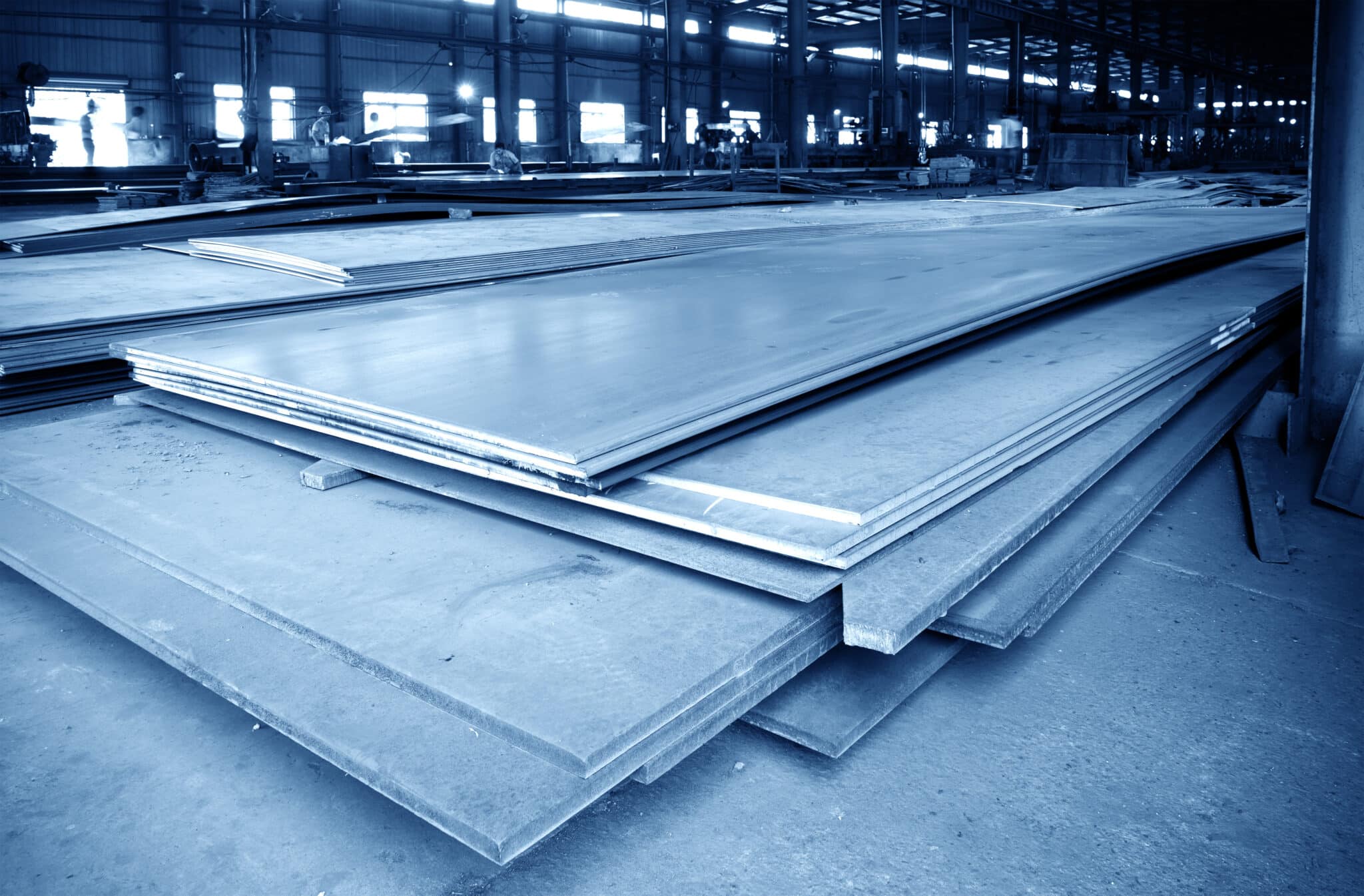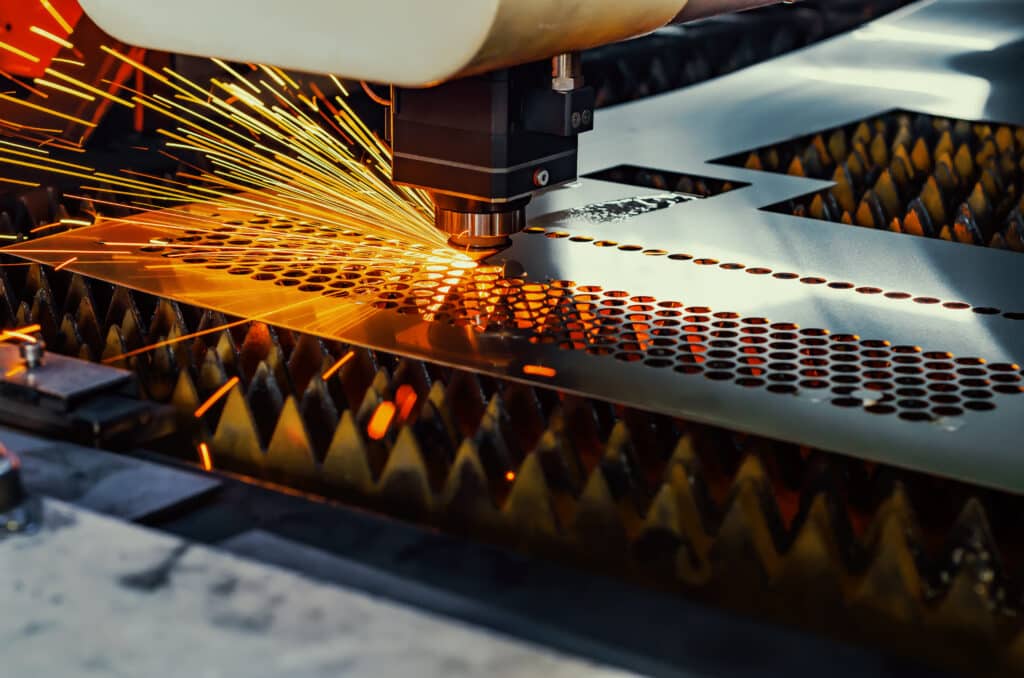
Understanding all types of steel can be challenging with the many options, grades, and classifications available. From its physical properties to structural applications, different types of steel offer various best-use cases. Whether you’re comparing steel options for a manufacturing project or need a quick overview, learn more about the different kinds of steel in our guide below.
A common question asked is, “How many types of steel are there?” When it comes to the different types of steel, there are four main types — alloy, carbon, stainless, and tool steel. Below is a quick guide to these different steel types, their key features, and their industry applications.
Alloy steel is formulated by combining steel with alloying metals, such as nickel, cobalt, and chromium. It’s manufactured together to provide unique steel properties in corrosion-resistance, hardness, toughness, and more. Alloy steel is the most diverse type of steel available with three classifications — low-alloy, medium-alloy, and high-alloy.
Here are the differences in alloy steel classifications:
High-alloy steel has the strongest resistance to high temperatures compared to carbon and stainless steel. On average, high-alloy steels can withstand up to 896 degrees Fahrenheit. Alloy steel is designed to increase strength, wear resistance, toughness, and hardness. It’s also the most expensive option out of all types of steel.
Due to its diverse properties, alloy steel is commonly applied to Oil & Gas industry pipelines because it can withstand higher temperatures and pressures. This type of steel’s exceptional durability is also leveraged in the automotive industry for crafting body panels, and in the food industry for manufacturing pots, pans, and kitchenware. The types of steel utilized in these applications are carefully selected to ensure optimal performance under varying conditions, highlighting the material’s adaptability and strength. Alloy steel is used in these sectors because of its long-lasting qualities, making it indispensable in industries demanding resilience and reliability.
Carbon steel is primarily formulated with carbon and combines other elements, such as alloy steel, to enhance its properties. Like alloy steel, carbon steel also has three classifications – low carbon, medium carbon, and high carbon.
Here are the differences in carbon steel classifications:
Carbon steel is designed to be wear-resistant, including deformation, denting, and scratching. For these reasons, carbon steel is one of the more difficult types of steel to manufacture due to its welding resistance. High-carbon steels may break when stretched but are less likely to break under tension. It’s also the most affordable option out of all types of steel.
Common industries that carbon steel is used in are Oil & Gas, automotive, and building construction. For Oil & Gas, carbon still is used in pressure vessels, storage tanks, and pipelines. In the automotive industry, carbon steel is used in various vehicle parts, including body parts, frames, and engine components. Building construction industries typically use carbon steel for beams, columns, and other structural parts.
| STEEL | CLASSIFICATIONS | KEY FEATURES | INDUSTRIES |
| Alloy Steel | Low-Alloy Steel Medium-Alloy Steel High-Alloy Steel | Strongest resistance to high temperatures, most durable/diverse, higher costs | Industrial Automotive Oil & Gas Food & Beverage |
| Carbon Steel | Low-Carbon Steel Medium-Carbon Steel High Carbon Steel | Most affordable, strong, heat-applicable, weaker resistance to high temperatures | Automotive Building Construction Oil & Gas Railroad Transport |
| Stainless Steel | Austenitic Ferritic Martensitic | Oxidation and stain resistant, easy maintenance, strong, weak resistance to high temperatures | Food & Beverage Healthcare Construction Retail |
| Tool Steels | Air-Hardening Oil-Hardening Cold Work Hot Work Water-Hardening High-Speed | Heat and wear-resistant, strong, tough | Aerospace Automotive Construction |
Stainless steel is the most well-known type of steel because it’s widely used in the consumer market. The reason why stainless steel is the most consumer-based type of steel is because of its oxidation and stain-resistant properties. Stainless steel is easy to clean and maintain, solid, and durable, which is why it’s used for many applications.
There are three types of classifications in stainless steel — austenitic, ferritic, and martensitic alloys.
Here are the differences in stainless steel classifications:
In the restaurant industry, stainless steel is used for food processing equipment, appliances, and storage tanks. It’s commonly used in kitchenware, such as pots, pans, and utensils. Stainless steel is also applied in the healthcare industry for sterile surgical instruments, medical devices, and prosthetics.
Last on the list of types of steel are tool steels. Tool steels are formulated with various types of alloys and carbon steel typically used for machine tools, such as drills. It’s designed for hardness, wear resistance, durability, and has a strong ability to hold sharp edges.
There are seven types of tool steel grades:
Common industries that tools steels are used in are aerospace and automotive. In the aerospace industry, tool steels are typically used for parts, including turbine blades, aircraft frames, and landing gear. The automotive industry commonly uses tool steels for parts, such as engine blocks, cylinder heads, and transmission components.

At H&K Fabrication, you can find a range of pipe welding tools made to make the job easy and efficient. If you’re in need of quality welding tools for your pipe welding projects, you can find anything you might need here. From Roll Out Wheels to Pipe Fitter Squares, we’ve got you covered.
What is an Alloy Steel?
Alloy steel is a type of metal that is made up of a combination of steel and other alloy metals, such as nickel, copper, or zinc.
What are the different types of steel?
There are 4 main types of steel: Carbon, Alloy, Stainless, and Tool steel.
What is Carbon Steel?
Carbon Steel is a type of steel that consists of Carbon and Iron.
© 2023 H&K Fabrication. All rights reserved. E-Commerce Website Design & E-Commerce PPC by Ranksey